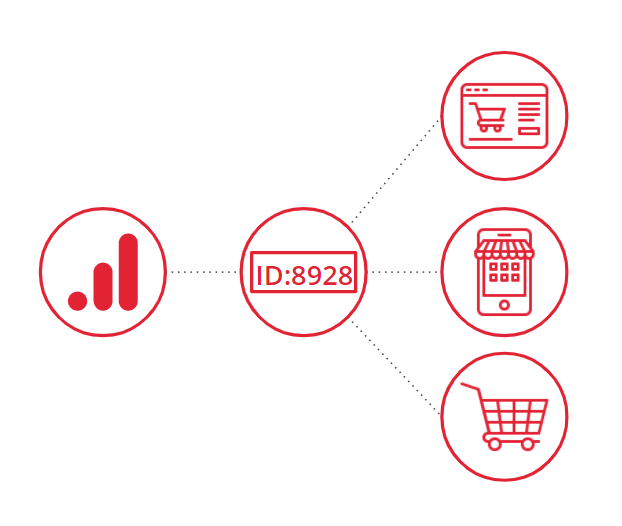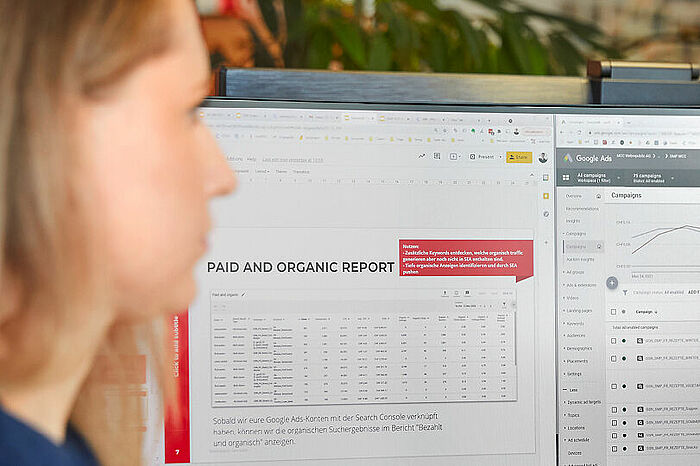The new version of Google Analytics offers a range of new features – especially in view of the planned phase-out of third-party cookies. Google Analytics 4 went live last fall. In the long term, the new version will replace the current platform, Universal Analytics. After working with the new platform ourselves, we've found GA4 to be a valuable tool for data-driven marketing and see it as the new gold standard for gaining more accurate insights into user journeys and intelligent reporting.
GOOGLE ANALYTICS 4 VS. UNIVERSAL ANALYTICS
In many respects, Google Analytics 4 is an upgrade to Universal Analytics. The standard version now offers features that were previously available only in the commercial version, GA 360. These features include:
- Automatic raw data export to BigQuery
- Standard reports are always available in unsampled form
- Access to Custom Reports in the Analysis Hub
Practical experience since the launch has also shown that reports load much faster in GA4 than in Universal Analytics.
ACCURATE INSIGHTS INTO CUSTOMER JOURNEYS
Google Analytics 4 marks a true paradigm shift, taking a cross-platform instead of cross-device approach to customer journeys by incorporating web and app as well as smart devices like smart watches. This offers the ability to monitor a variety of different data streams, not just those from web pages. In other words, customer journeys can be mapped more accurately than ever, which is one of the fundamental goals of data-driven marketing. Marketing activities can be customized to the relevant target groups, resulting in higher return on investment (ROI).
Google Analytics 4 accommodates these cross-platform journeys by combining its new event-driven data model with innovative features for user identification and machine learning algorithms.
New standard metrics now also focus on “user engagement” as well as simpler things like “Average Time on Page”. This unique metric is based on a variety of user interactions instead of simply measuring the start and end time of a page view. In addition, the automated page and screen view tracking now includes an option for monitoring specific data points without additional tagging – for example, scrolls, file downloads or video engagement.
SOPHISTICATED USER IDENTIFICATION
Because third-party cookies will be phased out in the future and browser restrictions are increasing, it's essential to have a solid repository of first-party data. GA4 is optimized for these changes and makes it possible, based on the first-party pool, to scale target groups with tools like BigQuery and Ads Data Hub. All activities are, of course, completely GDPR-compliant and do not require any personally identifiable information (PII).
Google Analytics 4 uses three levels of user identification:
- User ID
- Google Signals/Google ID
- Device ID/Client ID
The most accurate form of user identification is a user ID generated by the company itself. In the interest of adopting a consistent first-party data strategy, we recommend setting up a login area for users of your website(s) and app(s) so that this user ID can be transferred to GA4 when a user logs in. Subsequently linking the user ID with the device ID and Google Signals to create a common profile then allows the user identification to be maintained over a longer period of time, even if the user deletes cookies.

User identification when logging in with a company-generated user ID. Source: own representation.
MACHINE LEARNING-SUPPORTED REPORTS AND VIEWS
One major advantage of Google Analytics 4 is its extended machine learning features. The tool uses historical data, for example, to predict the probability of conversions or customer migrations. Based on this information, target groups can then be set up, for example for Google Ads or Display & Video 360. (This option will be added later in 2021.) Google Analytics 4 also highlights key trends in analytics data, such as changes in user preferences for specific products, and identifies anomalies in reports.
Machine learning is a central component of GA4. Even experienced Universal Analytics users will need some time to get acquainted with the new tool. However, the reports and views are much more flexible, and the Analysis Hub has a feature for creating customized dashboards. GA4 is not so much a basic reporting interface as a full-featured, do-it-yourself analytics toolbox.
GA4 is still a work in progress, and more great new features and reports are sure to be added soon.
SWITCHING FROM UNIVERSAL ANALYTICS TO GA4
To ensure a smooth transition to GA4, we recommend starting out with a parallel Universal Analytics and Google Analytics 4 setup in the near future. This will create a new property for GA4 with the event-based data model and corresponding events. You can then record metrics in both systems simultaneously.
This lets you build a repository of historical data big enough to complete the transition. The migration can also be split into several steps: In the first phase, you can simply create the GA4 property with an All Pages event before then adding other events and implementing any desired e-commerce tracking and customizations in the second phase.




